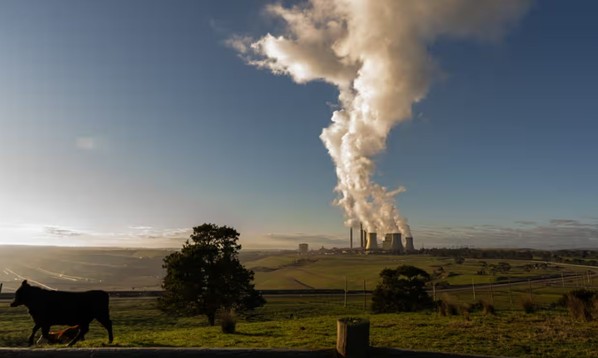
The opposition's "coal-to-nuclear" plan, unveiled last week, prioritizes fossil fuel generation while developing a nuclear industry, mostly after 2040, and slows the adoption of renewable energy and batteries. Critics warn this approach would hinder decarbonization efforts and undermine Australia's climate targets.
Using modeling by Frontier Economics, which the Coalition relied on, experts calculated that prolonging the lifespan of coal plants under this plan would lead to more than 1 billion tonnes of additional emissions by 2051. Labor's strategy, which aims for 82% renewable energy by 2030, predicts that 90% of coal-fired capacity would close by 2035, compared to the Coalition's estimate of only a third.
Dylan McConnell, an energy systems specialist at the University of New South Wales, labeled the nuclear plan "an absolute failure" for reducing electricity sector emissions. A separate analysis by economist Steven Hamilton corroborated the findings, indicating the Coalition's plan would generate 2.5 times more emissions than Labor's policy.
Beyond the electricity grid, the Coalition's approach assumes less electrification, meaning slower adoption of electric vehicles and continued reliance on petrol cars and fossil fuels in industry and households. Simon Holmes à Court, convenor of Climate 200, estimated this path could add 723 million tonnes of emissions from transport and industry alone by 2050, bringing the total extra emissions to 1.7 billion tonnes.
Australia's current annual emissions are approximately 440 million tonnes. If realized, the Coalition's policy could contribute an extra four years' worth of emissions over the next 25 years, jeopardizing the nation's international commitment to reduce emissions by 43% from 2005 levels by 2030.
The Coalition has defended its plan, claiming it would cut electricity grid costs by $263 billion compared to Labor's policy. However, critics argue the analysis omits key expenses, such as the cost of additional petrol, diesel, and gas, which could add $501 billion to the total. Furthermore, the Coalition's scenario assumes reduced industrial activity and significantly lower electricity consumption by 2050, skewing comparisons with Labor's projections.
This debate underscores the challenges Australia faces in transitioning to a sustainable energy future while balancing economic and environmental priorities.